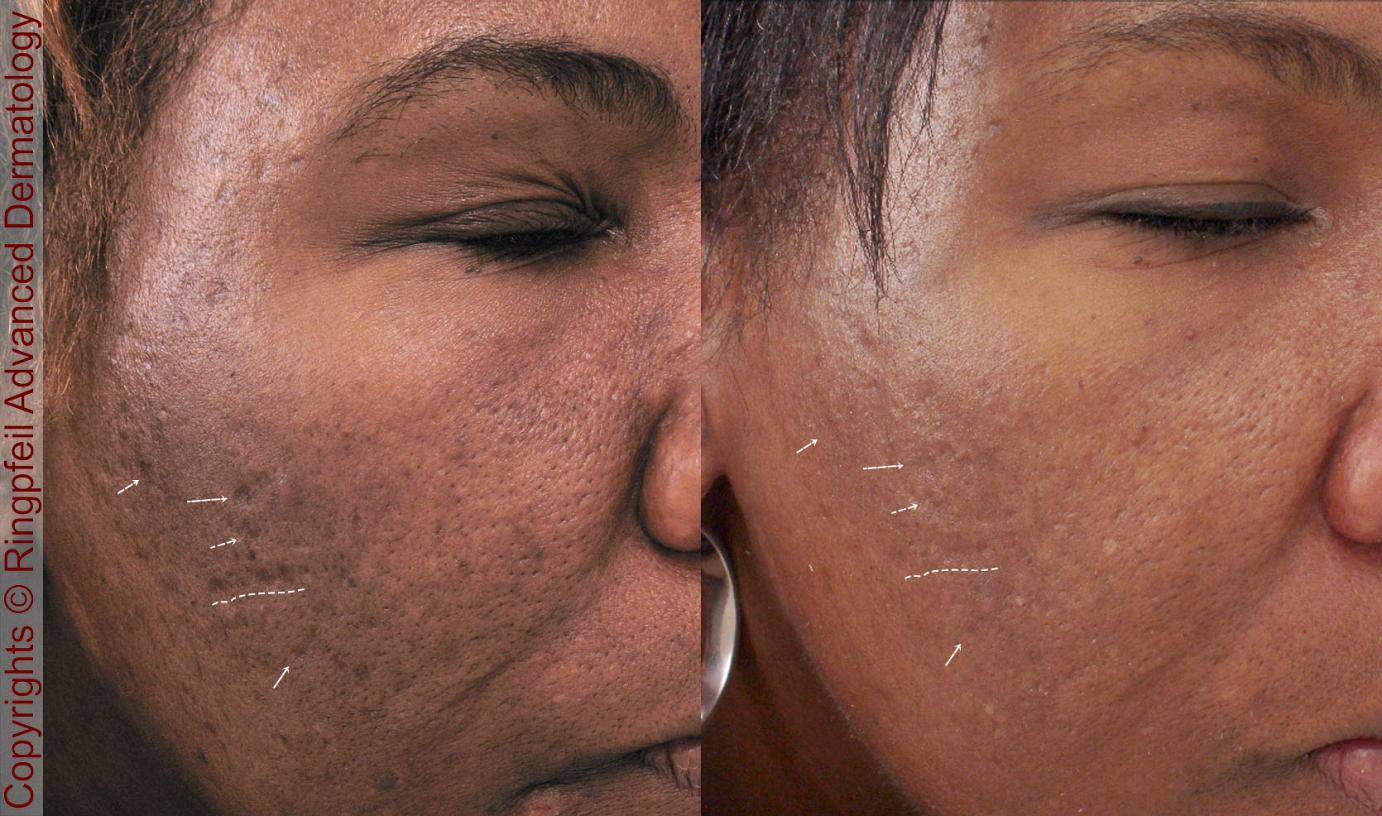Discovering Skin Problem: Identifying and Treating Acne Scars for Healthier Skin
Acne scars represent a substantial concern for people looking for to keep healthy and balanced skin, as they can affect both appearance and self-confidence. Understanding the various kinds of marks, from atrophic to hypertrophic, is necessary for figuring out proper treatment options.
Recognizing Acne Scars

The body's all-natural recovery procedure can cause either atrophic scars, which appear as anxieties in the skin, or hypertrophic marks, which are raised and arise from overflow of collagen. In addition, the psychological toll of acne scars must not be taken too lightly; several individuals report feelings of embarrassment, stress and anxiety, and reduced self-confidence. This psychological worry can influence social communications and overall lifestyle.
Dealing with acne scars needs a thorough understanding of their development and impact. Awareness of the potential for lasting effects related to neglected marks can inspire people to look for ideal therapies. Early intervention and reliable administration methods can substantially enhance skin appearance and improve psychological resilience, emphasizing the significance of understanding the intricacies bordering acne scars.
Kinds Of Acne Scars
Acne marks can be classified into distinct kinds, each displaying special attributes and needing particular therapy strategies. acne scars treatment. The main types of acne marks consist of atrophic, hypertrophic, and keloid scars

Hypertrophic marks, on the other hand, are increased above the skin degree and are the result of excessive collagen manufacturing during the recovery process. They generally continue to be within the boundaries of the original acne sore. Keloid scars are similar but expand past the original injury website, forming larger, increased locations that can be unpleasant or scratchy.
Recognizing these sorts of marks is important for choosing ideal treatment alternatives. Different scars may respond better to particular therapies, such as laser treatments, fillers, or surgical interventions, highlighting the value of a customized strategy to acne mark monitoring.
Determining Your Marks
Acne marks generally fall into two classifications: hypertrophic and atrophic marks. These can further be classified into ice-pick scars, boxcar marks, and rolling marks, each showing distinct attributes and calling for different methods for evaluation.
Hypertrophic marks, on the other hand, are raised and take place as a result of excessive collagen manufacturing throughout the healing process. Recognizing the particular functions of your marks-- such as structure, depth, and width-- is important for proper identification (acne treatment for sensitive skin). Furthermore, think about the distribution of scars across your skin, as this can indicate the seriousness and duration of the acne problem
Involving with a skin doctor can give useful understandings right into the nature of your scars, aiding in the distinction in between different types. An extensive understanding of your scars will ultimately lead to an extra tailored and effective therapy plan, guaranteeing a clearer and much healthier skin.
Treatment Options Readily Available
Recognizing the certain type of acne marks existing on your skin lays the groundwork i thought about this for discovering efficient treatment alternatives. Typical kinds of acne marks include atrophic (clinically depressed), hypertrophic (increased), and post-inflammatory erythema.
For atrophic scars, alternatives such as chemical peels, microneedling, and laser resurfacing are commonly used. Chemical peels off utilize acids to get rid of the outer layer of skin, advertising brand-new cell growth. Microneedling entails tiny needles that develop micro-injuries, stimulating collagen manufacturing. Laser resurfacing targets damaged skin cells, enhancing texture and tone.
Hypertrophic scars can be treated with corticosteroid shots to flatten the scar or laser treatment to reduce inflammation and improve appearance. Silicone gel sheets and stress dressings may likewise aid in managing raised scars.
On top of that, facial fillers can momentarily complete clinical depressions from atrophic scars, while surgical excision might be appropriate for serious situations. Each therapy option has its factors to consider and advantages, making it vital to seek advice from with a dermatologist. They can offer individualized referrals based on the type and seriousness of your marks, along with your skin kind and total health.
Tips for Prevention
Efficient prevention techniques can considerably minimize the likelihood of creating acne marks. Making use of non-comedogenic items aids prevent blocked pores, which can aggravate acne.
Avoiding need to stand out or choose acne sores is critical, as this can result in deeper skin damage and boost the danger of scarring. Instead, think about utilizing a chilly compress or non-prescription treatments to reduce swelling and redness.
Sunlight security is one more crucial aspect of prevention; ultraviolet (UV) rays can darken scars and prevent the recovery procedure. Using a broad-spectrum sun block with at the very least SPF 30 daily can protect the skin and advertise also healing.
Finally, preserving a balanced diet plan rich in minerals, antioxidants, and vitamins supports skin health and recovery. Remaining hydrated and managing stress and anxiety levels can also play a considerable function in decreasing acne flare-ups. By applying these methods, people can substantially reduce their opportunities of establishing acne scars.
Verdict
In final thought, understanding and identifying acne scars is necessary for reliable therapy and achieving healthier skin. Various types of acne scars, including atrophic and hypertrophic scars, necessitate specific interventions tailored to individual needs.
The body's natural recovery procedure can result in either atrophic marks, which show up as clinical depressions in the skin, or hypertrophic marks, which are elevated and result from overflow of collagen. They are more split right into three subtypes: ice pick scars, boxcar marks, and rolling marks. Acne marks usually drop right into 2 categories: atrophic and hypertrophic scars. These can additionally be identified right into ice-pick marks, boxcar Related Site scars, and rolling marks, each showing distinct qualities and requiring different approaches for assessment.
Various types of More hints acne marks, consisting of hypertrophic and atrophic marks, require certain interventions tailored to individual demands.
Comments on “Skin Rejuvenation Treatments: The Ultimate Guide to Rejuvenating Your Skin”